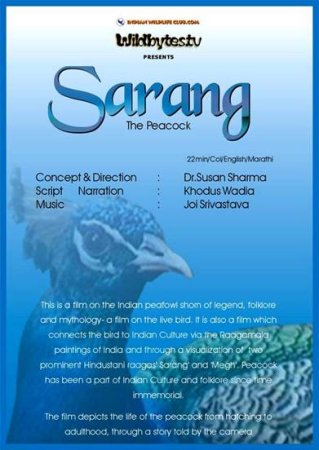Samar Singh
, President, World Pheasant Association - India.
 It is evident that the fascination for the Indian Peafowl had spread to other parts of the world several centuries ago and it was taken to various countries in Asia, Africa and Europe at different times, mainly by the invaders and
traders. There are reports of these birds in the palace gardens of the Egyptian Pharaohs, the Roman Emperors and even the legendary King Solomon, whose throne had attractive peacock images. When Alexander invaded India in the third century BC, he took back
with him to Macedonia several Indian peafowl. There is an interesting Greek myth about the origin of the peacock's colourful tail feathers, according to which the favourite bird of Hera, wife of the mythical hero Zeus, was a peacock and she was responsible
for placing on the peacock tail the eyes of the hundred-eyed giant Argos, when the latter was slain in a battle. In early Christian art, two peacocks facing each other represented the souls of the faithful drinking from the Fountain of Life and there was a
Christian belief, ascribed to St. Augustine, that the peacock symbolized immortality of the soul, since its flesh did not decay. Even in China, the peacock was considered a symbol of beauty, dignity and rank and was made the emblem of the Ming rulers. In modern
times, the Indian Peafowl has been coveted by several zoological gardens in different countries and some of these birds were also kept in the premises of the Palais des Nations in Geneva.
It is evident that the fascination for the Indian Peafowl had spread to other parts of the world several centuries ago and it was taken to various countries in Asia, Africa and Europe at different times, mainly by the invaders and
traders. There are reports of these birds in the palace gardens of the Egyptian Pharaohs, the Roman Emperors and even the legendary King Solomon, whose throne had attractive peacock images. When Alexander invaded India in the third century BC, he took back
with him to Macedonia several Indian peafowl. There is an interesting Greek myth about the origin of the peacock's colourful tail feathers, according to which the favourite bird of Hera, wife of the mythical hero Zeus, was a peacock and she was responsible
for placing on the peacock tail the eyes of the hundred-eyed giant Argos, when the latter was slain in a battle. In early Christian art, two peacocks facing each other represented the souls of the faithful drinking from the Fountain of Life and there was a
Christian belief, ascribed to St. Augustine, that the peacock symbolized immortality of the soul, since its flesh did not decay. Even in China, the peacock was considered a symbol of beauty, dignity and rank and was made the emblem of the Ming rulers. In modern
times, the Indian Peafowl has been coveted by several zoological gardens in different countries and some of these birds were also kept in the premises of the Palais des Nations in Geneva.
As a result of consistent royal patronage over the ages, in India the peafowl has managed to permeate numerous facets of the life and culture of the Indian people from the earliest times and it has literally adorned everything that has
been associated with it. This is amply demonstrated in art, architecture, sculpture, painting, metalwork, glass work, jewelery, ornaments, handicrafts, hand-loom, textile, literature, music, folklore and the traditions of almost all regions in the country.
There are examples aplenty to show that humankind, over the ages, has been greatly fascinated and inspired by this gorgeous bird to give expression to highest levels of creativity in multifarious ways and forms.
It is this remarkable attribute of ‘adding value' that makes the Indian Peafowl very special in India. Added to it is the fact that this is one bird that is known in every household throughout India and even the children get to know
about it quite early in life. Perhaps one reason is that Indian literature in virtually all languages and dialects, starting from Sanskrit, is replete with references to the peafowl, particularly the peacock, in adorable terms and in a manner that no other
bird or animal has been able to equal. The same applies to the folklore, songs and music of different regions across the country. However, it is noteworthy that even the English language has not escaped its sweep and impact. The expressions ‘peacockish' and
‘proud as a peacock' are often used, but there are several other ways in which the peacock has invaded the English dictionary and again ‘added value' in meaningful terms. Hence, we have colours that are called ‘peacock blue' and ‘peacock green', birds that
are called ‘peacock bittern', ‘peacock heron' and ‘peacock pheasant', flowers called ‘peacock flower' and ‘peacock iris', a ‘peacock butterfly', a ‘peacock beetle', a ‘peacock moth', and even a kind of ‘peacock ore' and a type of ‘peacock coal'. Then, there
is the well known ‘peacock dance', essentially a courtship display but also signifying the role of a dependable weatherman, heralding the onset of the monsoon from year to year and endearing the bird for obvious reasons.
(Photograph; poster of film “Sarang –The peacock”)
To buy this video
CLICK HERE )
This article is concluded